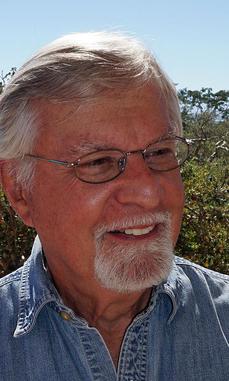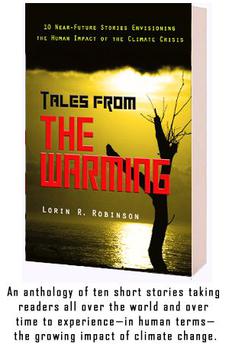© Moronic Ox Literary Journal - Escape Media Publishers / Open Books
Moronic Ox Literary and Cultural Journal - Escape Media Publishers / Open Books
Novel Excerpts, Short Stories, Poetry, Multimedia, Current Affairs, Book Reviews, Photo Essays, Visual Arts Submissions
Advertise your book, CD, or cause in the 'Ox'
Trump fiddles while the world burns
by Guest Editor Dr. Lorin R. Robinson
Published by permission from the Cap Times, Madison, Wisconsin
This column started out to analyze the outcomes of the 2015 Paris Climate Conference that took place three years ago this month and was widely billed as our last great hope to forestall the worst effects of the looming climate crisis.
But I can't resist starting it by repeating our denier in chief’s latest ludicrous pronouncement about the warming. How can we have global warming, he tweeted, when we’re experiencing record-low temperatures in the Northeast? Of course, we’ve heard that before from other “enlightened” politicians and pseudo-scientists.
(Do I even need to explain that the warming is not consistent from region to region, but that 16 of the 17 hottest years globally have happened since 2000? This column is also too short to explain in detail that these low temperatures result from the slowing of the Gulf Stream — the major carrier of warmth up the Atlantic coast — due to billions of tons of cold fresh water flowing off the Greenland Ice Cap.)
No ridiculous climate statement from the POTUS to date, of course, tops his claim that global warming is a Chinese plot designed to hamper U.S. manufacturing when, of course, what’s actually hampering manufacturing — and agriculture — are his trade tariffs.
And, as a further example of Trumpian dysfunction, his tweet came at the same time as release of the National Climate Assessment — endorsed by NASA, the National Oceanic and Atmospheric Administration, the Department of Defense, and 10 other federal scientific agencies — that contradicts nearly every position Trump has taken on the issue.
Despite clear evidence that temperatures and sea levels are rising and that we are suffering increasingly from flooding, drought, drought-driven forest fires, violent weather and marine-life killing ocean acidification, Donald Trump and his Environmental “Protection” Agency continue to void, dismantle or weaken virtually all environmental protections put in place by earlier administrations.
As the Climate Assessment notes, since 1901 the U.S. has warmed 1.8 degrees F. This “can only be explained by the effects that human activities, especially emissions of greenhouse gases (GHG), have had on the climate.” It warns that humans must dramatically cut GHG pollution to avoid the 3.6 degree F-increase proposed in Paris as the maximum threshold if we are to avoid the worst of warming–induced calamities. The report maintains that if GHG concentrations continue to rise, the earth could warm by as much as 9 degrees F by 2100.
Projections of sea-level increase are equally ominous. The report claims that if carbon pollution continues, the Atlantic Coast will see a sea-level rise of 5 feet by 2100; New Orleans, Houston, and the Gulf Coast, also 5 feet; Los Angeles and San Francisco, 3 feet.
And these are best-case scenarios. The last time there was this much carbon dioxide in the atmosphere — 800,000 years ago — the seas were 100 feet higher and the global average temperature was 11 degrees F warmer than today.
Andrew Light, an author of the report and senior fellow at the World Resources Institute, said that the assessment reads like an endorsement of the Paris Agreement — which brings us to a review of its impact to date on reducing global warming.
In a word: None.
The world continues to dump about 40 billion tons of carbon dioxide into the atmosphere annually and the gas’s concentration continues to rise — it's 409 ppm at this writing.
As of November, 194 nations and the European Union have signed the Paris Agreement, and 184 states and the EU, representing more than 87 percent of global GHG emissions, have made pledges to reduce them.
Of course, if Trump has his way, that number will be reduced by one, since he has vowed to withdraw. This wrong-headed decision makes the U.S. one of just three countries not part of the voluntary agreement. The other two are Syria and Nicaragua.
In any case, organizers of the Paris meeting have admitted that total pledges for reduction fall far short of that required to keep the temperature increase under 3.6 degrees F. Eliminating promised reductions by the U.S. won’t substantially change that reality.
The bad news doesn’t stop there. A report just issued by the U.N. Intergovernmental Panel on Climate Change (IPCC), sponsor of the Paris meeting, describes a world in serious trouble as soon as 2040 at an even lower temperature threshold. The report was written by 91 scientists from 40 countries who analyzed more than 6,000 scientific studies.
The authors found that if GHG emissions continue at the current rate, the atmosphere will warm by as much as 2.7 degrees F above preindustrial levels by 2040, inundating coastlines, intensifying drought and severe weather. Previous work had focused on estimating the damage if the temperature were to rise above 3.6 degrees F.
The report “is quite a shock,” said Bill Hare, author of previous IPCC reports and a physicist with Climate Analytics. “We were not aware of this just a few years ago.”
What are the chances the world can keep the GHG-induced temperature increase below 2.7 degrees F? For reasons of chemistry and economics, the answer is “nil.”
With carbon dioxide in the atmosphere exceeding 400 ppm, many climate scientists maintain the effects of the warming are already baked in, irreversible. Certainly, rapid and drastic reductions in GHG would help. But even if we ceased burning all fossil fuels today and converted tomorrow to nonpolluting energies, the earth would continue to warm.
Why? A chemist will tell you that the carbon dioxide molecule is robust — it degrades very slowly — and can stay intact in the atmosphere for up to 90 years. So a molecule that goes up some smokestack today can still be trapping heat in 2108.
Then there are economic realities that make it unlikely all nations will rally around GHG reduction. Approximately 150 countries are defined as developing. With justification, these nations blame the industrialized world for trashing the atmosphere.
The warming puts poorer nations in a double bind. They are being asked to curb emissions by converting to more expensive alternative energies. But without economic growth coming from burning cheap fossil fuels, they cannot afford conversion to non-fossil fuels, nor can they afford costly cleanup and mitigation efforts necessary to deal with the growing crisis.
At the 2009 climate talks in Copenhagen, poor countries were promised $100 billion a year by 2020 to help them kick the fossil-fuel habit while they work to develop economically. These funds — from first-world taxpayers and the private sector — were to be placed in the U.N.’s Green Climate Fund.
And how is the first world doing with that pledge? As of May 2017, a total of only $10.3 billion was in the GCF coffer.
The failure to rein in the looming climate crisis is not the fault of the Paris conference. It was a good-faith effort to move the world in the right direction — the reduction of GHG emissions. The problem is that the world shows very little appetite for kicking its fossil-fuel habit. It appears likely we will know the true cost of this addiction much sooner than expected.
Lorin R. Robinson is a writer and former chair of the journalism department at UW-River Falls. He is author of Tales from The Warming.
Dr. Lorin Robinson is a writer and former chair of the Journalism Department, University of Wisconsin—River Falls. His latest book is Tales from The Warming: 10 Near-Future Stories Envisioning the Human Impact of the Climate Crisis.
Coming in May 2018 from
Open Books





